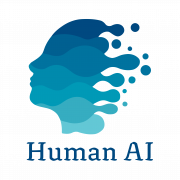Getting it right in the selection of profiles
🔵 Article originally published in the magazine “Dirigir Personas” of AEDIPE – Spanish Association of People Management and Development, you can read it here.
Noelia Sanz, COO of Human AI
Surely we have all experienced the consequences of poor selection, both in recruitment and in internal promotion processes. We have always heard that you hire for aptitude and fire for attitude. It is almost more important how an employee behaves than how much technical knowledge he or she has of something, because a person with a high capacity for learning will always be able to acquire that knowledge. However, it is not so easy to mold the personality to acquire skills that do not come “as standard”. This is why it is crucial to get the profile selection right.
Also, even if the HR team is highly experienced, there is always a human predisposition to bias, the great enemy of selection interviews, as well as of tests, because of candidates’ self-perception. However, AI has arrived to complement that function and facilitate the analysis of the socioemotional competencies we are trying to look for in that interview or with other selection tests. We can now count on Human AI, an objective assistant to help us match the selected profile to the position to be filled. Thanks to psycholinguistics and natural language processing (NLP), we can obtain an immediate report of 35 socioemotional competencies (soft skills), simply by analyzing a text or a 1000-word voice transcript.
In addition, we have developed an ethical and digital code of conduct to be adhered to in order to access our services.
What competencies does it measure exactly? Those of the Big 5/OCEAN model? for personality (McRae & John 1992), the most widely accepted model by the international scientific community, which the Organization for Economic Cooperation and Development (OECD) has used to base its model of socioemotional competencies worldwide in the educational and professional sphere:

With the assessment of these competencies, we can further refine the “qualitative” traits of the evaluated candidate and choose the one who best suits the characteristics of the position to be filled. And for those who are not selected, we can send them their individualized report with guidelines for improvement, which will reinforce our employer brand.
Perhaps the HR team may see AI as a threat, however, it is a great ally that in no case will replace its function, but will enhance and complement it. The many advantages of this virtual assistant include a drastic reduction in the time spent analyzing information and writing reports, which will speed up the time it takes to fill vacancies. And, in the short term, it will reduce turnover, as we will have made a better selection by matching the required profile.
It is true that the use case is not limited exclusively to the moment of incorporation. There are other situations in which this assistant can become our best companion. It can help to establish career plans for the employee, reinforcing those competencies that need to be improved, or assigning him a mentor to help him in the process. Human AI also offers the possibility to see the evolution over time of the development of competencies, checking if these plans are being effective.
On the other hand, this tool can help to cover an internal promotion with candidates from within the organization. How many times do we make the mistake of promoting a good technician who does not have the managerial skills to assume the function? How many times do we doubt about the interest or bias in the performance evaluations? Or candidates are proposed for “cronyism” who do not really meet the required profile for that department. With the Human AI report we can find the best internal candidate for the vacant position because, not only will we have the individualized report, but we can compare the results of all of them, competency by competency, to choose the most suitable one.
It can also be a good tool for calibrating corporate culture or values. If any of us were asked which employees best represent our corporate culture, a few names would surely come to mind. And not only for their technical knowledge but also for their way of doing, behaving, leading and influencing. Imagine if you could start recruiting profiles with similar patterns to theirs. By simply analyzing these “benchmark” employees to find out their assessment of these 35 competencies, you could use their results as the optimal selection parameters.
In definitive, Human AI is a tool that enhances the work of the HR department to provide a better service to the organization with objectivity, immediacy and without the need to torment people with the “psychometric ordeal”.





